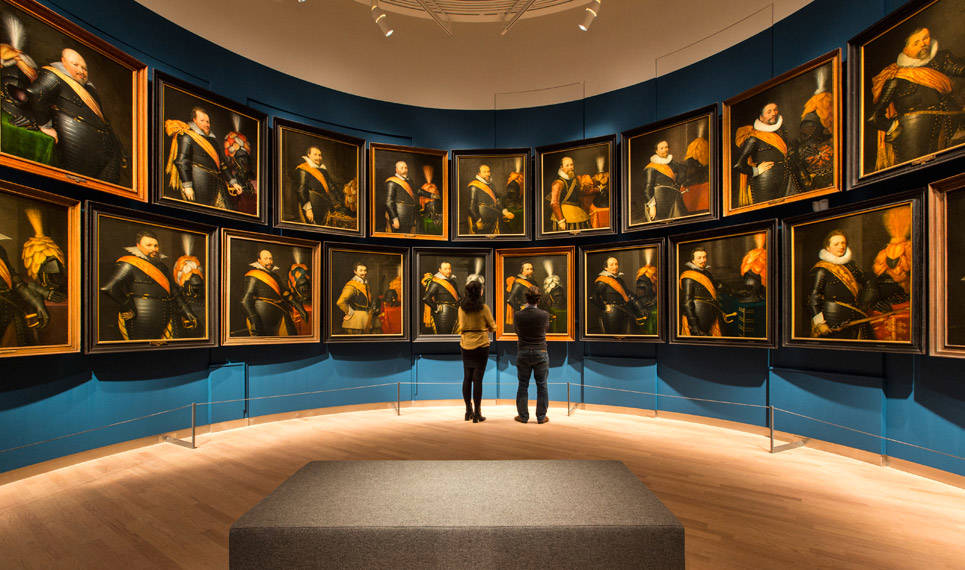Why in storage?
A selection of twenty-five paintings will be presented in the exhibition. The central question is always: why are those works not on display in the galleries?
The selection of paintings contains a number of surprises: Andy Warhol, for example, is probably not a name you would associate with the Mauritshuis. His Portrait of Queen Beatrix was purchased in 1986 since it is customary in Dutch government buildings to have a portrait of the head of state displayed.
Some paintings, such as an anonymous small work on copper depicting Simeon and the Christ Child, will never leave storage because they are simply not good enough to be put on show. Others cannot be displayed because they are in such poor condition. The Portrait of a Man by Karel Slabbaert, for example, hung in less than ideal conditions for many years in the then Dutch East Indies. Among other problems, the extreme climate caused the painting’s paint layer to crack dramatically.
Dimensions, condition and numbers can also explain why a work does not form part of the permanent display at the Mauritshuis. For example, a series of 25 officer portraits by Hague painter Jan van Ravesteyn dating from the early seventeenth century will be displayed in its entirety for the first time since the eighteenth century.
Sometimes a celebrated purchase later reveals itself to be a ‘royal’ mistake. In 1821 King William I acquired a collection for the Mauritshuis that included works by great masters such as Raphael, Titian and Velázquez. Unfortunately it turned out to be a collection of inferior works that would quickly be sold on. One of the few paintings that did remain in the Mauritshuis was a highly optimistic attribution to Raphael. This Female Figure is now thought to be the work of an anonymous Italian artist and the painting has not left storage for many years.
A peek behind the scenes
Visitors to the exhibition will gain access to the inner workings of the Mauritshuis, where storage - the repository for items in the collection that for various reasons cannot be displayed to the public – plays a key role. The paintings selected for this exhibition will illuminate this aspect of museum practice.



